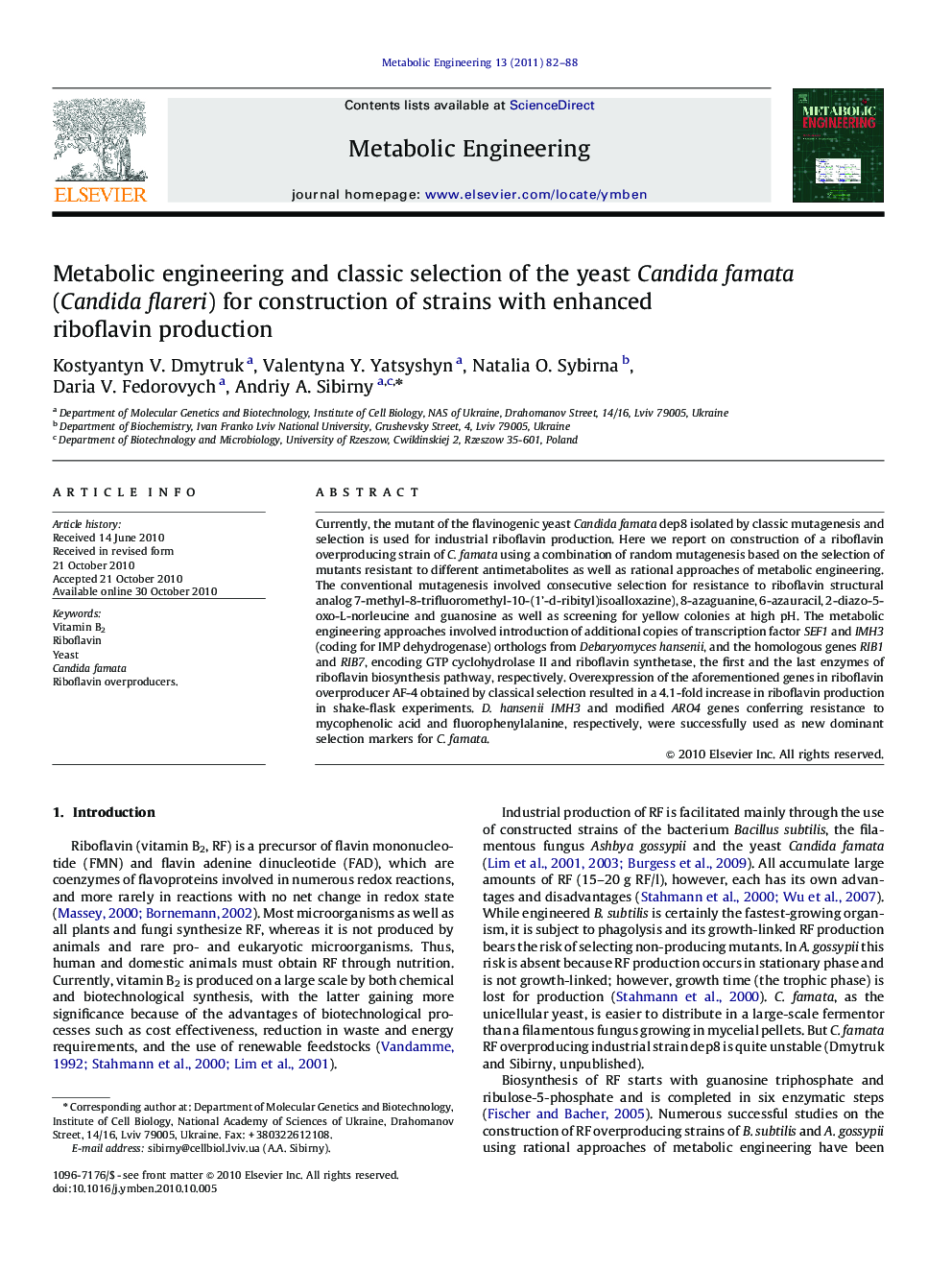| Article ID | Journal | Published Year | Pages | File Type |
|---|---|---|---|---|
| 31837 | Metabolic Engineering | 2011 | 7 Pages |
Currently, the mutant of the flavinogenic yeast Candida famata dep8 isolated by classic mutagenesis and selection is used for industrial riboflavin production. Here we report on construction of a riboflavin overproducing strain of C. famata using a combination of random mutagenesis based on the selection of mutants resistant to different antimetabolites as well as rational approaches of metabolic engineering. The conventional mutagenesis involved consecutive selection for resistance to riboflavin structural analog 7-methyl-8-trifluoromethyl-10-(1'-d-ribityl)isoalloxazine), 8-azaguanine, 6-azauracil, 2-diazo-5-oxo-L-norleucine and guanosine as well as screening for yellow colonies at high pH. The metabolic engineering approaches involved introduction of additional copies of transcription factor SEF1 and IMH3 (coding for IMP dehydrogenase) orthologs from Debaryomyces hansenii, and the homologous genes RIB1 and RIB7, encoding GTP cyclohydrolase II and riboflavin synthetase, the first and the last enzymes of riboflavin biosynthesis pathway, respectively. Overexpression of the aforementioned genes in riboflavin overproducer AF-4 obtained by classical selection resulted in a 4.1-fold increase in riboflavin production in shake-flask experiments. D. hansenii IMH3 and modified ARO4 genes conferring resistance to mycophenolic acid and fluorophenylalanine, respectively, were successfully used as new dominant selection markers for C. famata.
